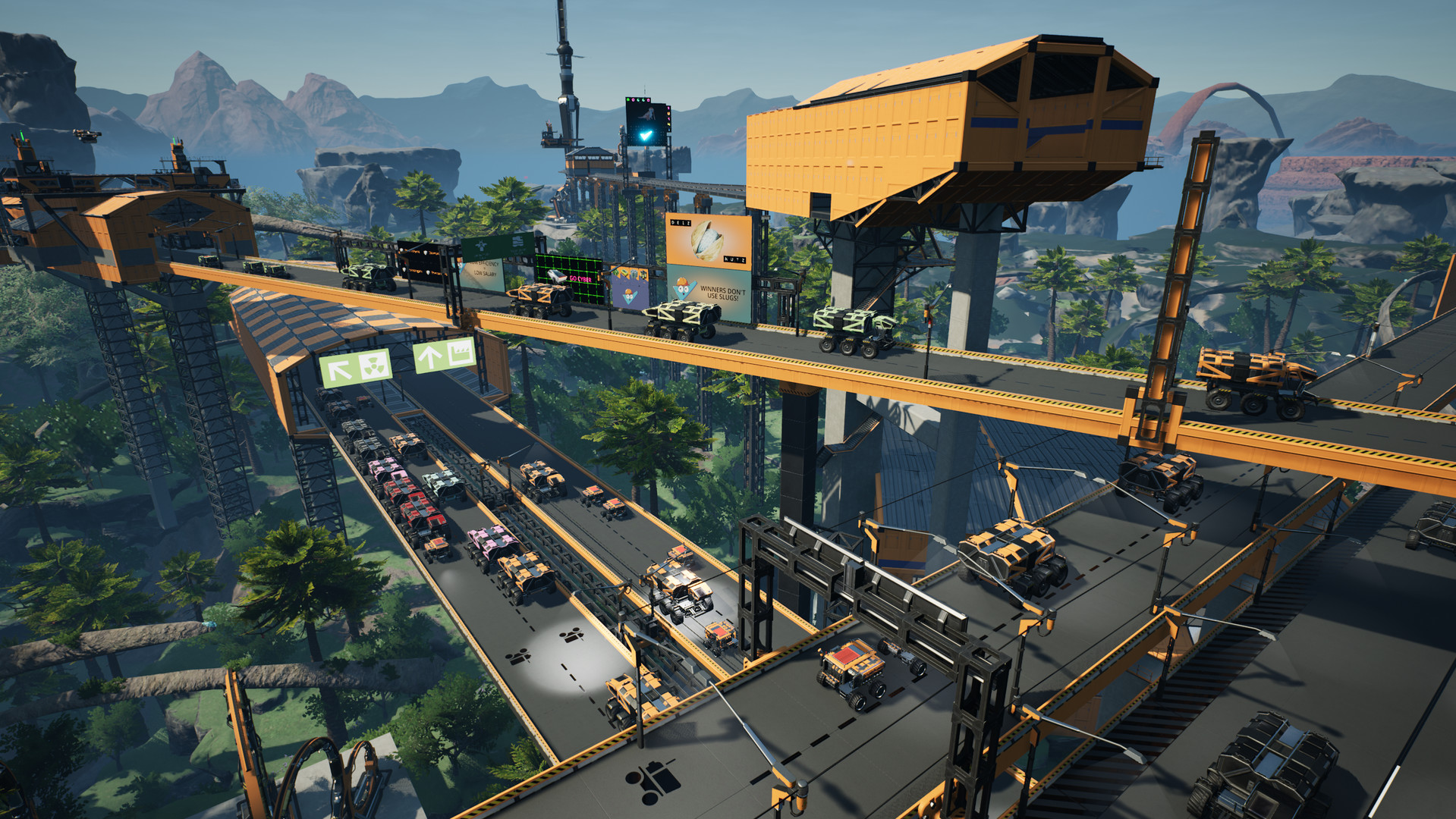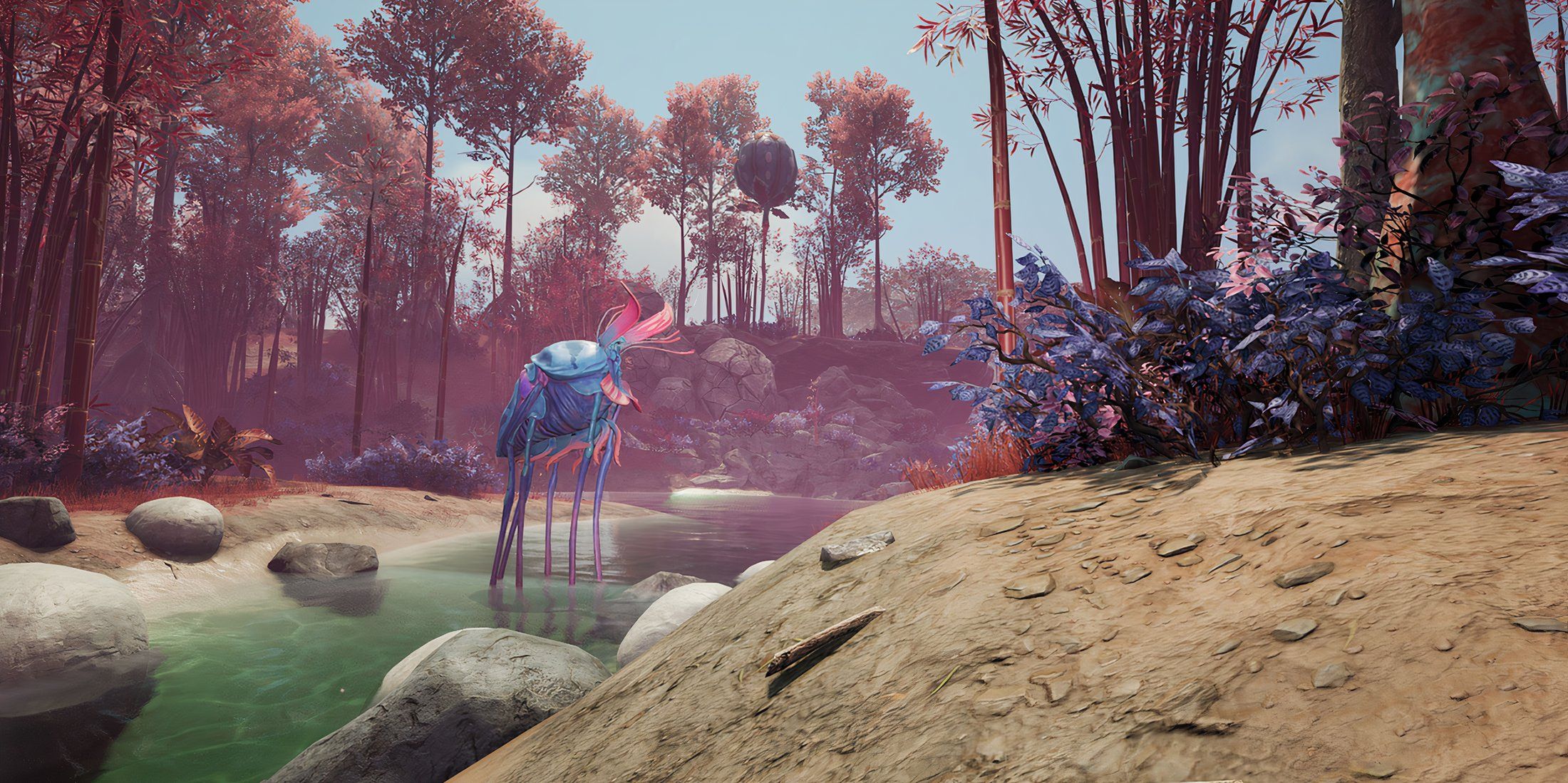Can You Pause Satisfactory? Mastering Your Factory's Downtime
For any dedicated pioneer venturing into the alien landscapes of Satisfactory, a crucial question often arises amidst the hum of machinery and the intricate dance of conveyor belts: can you pause Satisfactory? This seemingly simple query delves deep into the core mechanics of the game, impacting everything from resource management to strategic planning.
Unlike many single-player experiences where hitting 'Esc' brings the world to a standstill, Satisfactory operates on a persistent, real-time simulation. Understanding how the game handles breaks, AFK moments, and the need for a breather is essential for optimizing your sprawling industrial empire and maintaining your sanity.
Table of Contents
- Understanding Satisfactory's Real-Time Nature
- The Menu Pause: A Partial Solution
- Multiplayer and Dedicated Servers: The Unpausable Frontier
- Why the Lack of a True Pause Matters
- Strategies for Managing Your Factory When AFK
- Developer Philosophy and Game Design
- The Community's Perspective and Modding
- Conclusion: Mastering the Flow of FICSIT
Understanding Satisfactory's Real-Time Nature
At its core, Satisfactory is a game about automation, efficiency, and scale. From the moment you land on an alien planet as a FICSIT employee, your mission is to exploit its resources and build increasingly complex factories. What sets Satisfactory apart from many other base-building or crafting games is its unwavering commitment to a real-time, persistent world simulation. This means that once you place a constructor, connect it to a power source, and feed it raw materials, it will continue to operate, consuming resources and producing items, regardless of whether you are actively interacting with it, exploring the vast landscape, or even just idling in your inventory.
Unlike games like Minecraft, where time only progresses when a player is nearby, or Factorio, which offers a true single-player pause, Satisfactory's world is always alive. This fundamental design choice is crucial to understanding the answer to "can you pause Satisfactory." It shapes every decision you make, from the initial layout of your production lines to the long-term sustainability of your power grid. The continuous flow of resources and production is both the game's greatest charm and its most significant challenge, demanding constant attention and meticulous planning from the aspiring industrialist.
The Menu Pause: A Partial Solution
So, to directly address the burning question: can you pause Satisfactory? The answer is a nuanced "yes, but not in the way you might expect." In single-player mode, pressing the 'Esc' key will bring up the game's main menu. This action effectively "pauses" your personal interaction with the world. Your character will stop moving, the user interface will appear, and you can access options, save your game, or exit. However, this is where the traditional concept of pausing ends.
What Happens When You Menu-Pause?
While your character may be static and your cursor free to navigate menus, the game world itself continues its relentless march forward. Here's what keeps happening:
- Factory Operations: All your constructors, assemblers, manufacturers, miners, and other production buildings continue to operate at full capacity, provided they have power and resources. Conveyor belts keep moving, transporting items from one machine to the next.
- Power Consumption: Your power grid remains active, and all connected buildings will continue to draw power. If your power production is insufficient, a blackout can still occur while you are in the menu.
- Resource Depletion: Miners will continue to extract resources from nodes, and if your storage is full, items will back up, potentially halting production lines. Conversely, if a critical resource supply runs dry, your factory will starve.
- Time Progression: The in-game clock continues to tick. Day-night cycles progress, and any time-sensitive events (though rare in Satisfactory) would still occur.
- Creature Movement: While you are safe from direct attacks while in the menu, the world's fauna continues to roam. If you left your character in a dangerous spot, creatures would still be moving around, potentially pathing closer to you.
This "menu pause" is primarily designed for administrative tasks and a brief respite for the player, not for halting the intricate dance of your industrial complex. It's a critical distinction for anyone wondering how to effectively manage their time in the game, especially when stepping away for a short break.
Multiplayer and Dedicated Servers: The Unpausable Frontier
The concept of a true pause becomes even more elusive when you venture into the multiplayer aspects of Satisfactory. If you are playing with friends, or on a dedicated server, the answer to "can you pause Satisfactory" becomes an unequivocal "no."
In a multiplayer session, the game world is shared among all connected players. It's a continuous, living environment where everyone's actions (or inactions) impact the collective factory. Therefore, there is no mechanism for any single player to pause the game for everyone else. Even if one player opens their menu, the game continues uninterrupted for all other players and for the entire factory simulation.
Dedicated servers take this persistence to the next level. These servers run 24/7, independent of any player being logged in. This means your factory continues to operate even when you and your friends are offline. Resources are consumed, products are made, and power is drawn around the clock. This feature is fantastic for collaborative, long-term projects, as progress is always being made. However, it also demands a higher level of planning and robustness in your factory design, as any inefficiencies or potential failure points will continue to manifest even in your absence.
Challenges in Multiplayer
The lack of a true pause in multiplayer presents unique challenges:
- Coordination: Players must coordinate breaks, especially if one person's absence could impact a critical part of the factory.
- Unattended Factories: Leaving a factory running unattended, especially on a dedicated server, can lead to issues like:
- Power Outages: If fuel sources run dry or production exceeds power capacity, your entire grid could collapse.
- Resource Backups: Overproduction without sufficient storage or consumption can clog conveyor belts and halt production.
- Resource Starvation: If a critical input runs out, downstream production will cease.
- Persistent World Dangers: While less common, leaving your character in a dangerous area could theoretically lead to issues if creatures wander into range, though most players log out in safe zones.
These challenges underscore the importance of designing self-sustaining and resilient factories, particularly when collaborating or utilizing dedicated servers. The game encourages proactive problem-solving and robust engineering rather than relying on a pause button.
Why the Lack of a True Pause Matters
The absence of a traditional pause button in Satisfactory isn't just a minor inconvenience; it's a fundamental aspect of the game's design that significantly impacts gameplay and strategy. Understanding why this design choice matters helps players adapt and thrive in the FICSIT universe.
- Emphasis on Self-Sufficiency: Because the world never truly stops, players are compelled to design factories that are self-sufficient and resilient. This means ensuring stable power generation, robust resource acquisition, and efficient production lines that can handle continuous operation without constant player intervention.
- Consequences of Inefficiency: In a game where time is always moving, inefficiencies have immediate and continuous consequences. A bottleneck in one part of your factory will lead to a backup or starvation that persists until you fix it. A power grid that's barely keeping up will eventually trip, potentially bringing your entire operation to a halt. This constant feedback loop encourages players to optimize and troubleshoot.
- Strategic Planning for Breaks: Players can't simply walk away from their keyboard for an hour and expect everything to be exactly as they left it. This forces a different kind of strategic thinking: how do I design my factory so it can run smoothly while I'm AFK? What checks do I need to perform before logging off?
- Immersion and Challenge: For many players, the persistent world adds to the immersion and challenge. It feels more like managing a real industrial complex, where downtime or neglect can have real consequences. This design choice contributes to Satisfactory's unique identity within the factory-building genre.
- Resource Flow and Logistics: The continuous flow of resources means that every decision about transportation, storage, and consumption is critical. You can't pause to let a buffer fill up; you have to design the buffer to fill up naturally as the factory runs.
Ultimately, the inability to fully pause Satisfactory is a deliberate design choice that enhances the game's core loop of building, optimizing, and problem-solving. It transforms what might be a simple break in other games into another layer of strategic consideration.
Strategies for Managing Your Factory When AFK
Since you can't truly pause Satisfactory, especially in multiplayer or on dedicated servers, developing effective strategies for managing your factory when you're away is crucial. These techniques help ensure your hard work continues to pay off and prevents unexpected disasters.
Power Management is Key
The most common pitfall for unattended factories is a power outage. A sudden surge in demand or a depletion of fuel can bring your entire operation to a grinding halt. To prevent this:
- Over-Provision Power: Always build more power generators than your current consumption demands. Aim for at least 20-30% overhead, or even more if you're planning significant expansion. This buffer absorbs fluctuations and prevents blackouts.
- Automate Fuel Supply: For coal, fuel, or nuclear power, ensure your fuel supply lines are robust and fully automated. Monitor your fuel production to make sure it can keep up with consumption. For nuclear, safely manage waste products.
- Use Power Switches: For non-essential factory sections or experimental builds, consider using power switches. You can manually turn off these sections before going AFK, reducing overall power draw and minimizing risk.
- Monitor Power Production Graph: The power graph in your power pole interface is invaluable. Regularly check it to identify trends, potential dips, and ensure your baseline production comfortably exceeds your maximum consumption.
Resource Buffers and Storage
Preventing resource backups or starvation is vital for continuous operation. Industrial Storage Containers are your best friends here:
- Input Buffers: Place industrial storage containers before key production lines (e.g., before manufacturers for complex parts). This ensures a steady supply of inputs, even if there are minor fluctuations upstream.
- Output Buffers: Similarly, place storage containers after production lines to collect finished products. This prevents machines from backing up if the downstream consumption isn't perfectly matched.
- Overflow Management: Utilize Smart Splitters and Programmable Splitters to manage overflow. You can direct excess resources to dedicated storage containers or to a sink, ensuring your main production lines don't get clogged. This is particularly useful for byproducts like sulfuric acid from uranium processing or water from fuel generation.
- Dedicated Storage Hubs: Centralized storage areas for common components can help manage overall factory flow and provide quick access to materials for new builds.
Pre-Planning for Downtime
Before you step away from your game, especially for an extended period, take a few moments to review your factory:
- Check Critical Production Lines: Briefly inspect your most important production lines (e.g., those producing components for your Space Elevator milestones or high-tier parts). Ensure they are running smoothly and not backed up or starved.
- Review Power Grid: A quick glance at your power graph can confirm stability. Address any red flags immediately.
- Clear Bottlenecks: If you notice any obvious bottlenecks, try to resolve them before leaving. Even a temporary fix can prevent a major issue.
- Log Out in a Safe Location: While not directly factory-related, it's good practice to log out in a safe, central location (like your hub or a main factory floor) to avoid any accidental encounters with wildlife upon logging back in.
By implementing these strategies, you can minimize the risks associated with Satisfactory's persistent world and ensure your factory continues its profitable operations even when you're not actively at the controls. The question of "can you pause Satisfactory" becomes less about stopping the game and more about designing a system robust enough to run itself.
Developer Philosophy and Game Design
The decision by Coffee Stain Studios not to include a true pause function in Satisfactory is not an oversight but a deliberate design choice that underpins much of the game's identity. This philosophy aligns with their vision for a dynamic, living world where player actions have continuous consequences and where the challenge lies in building a truly resilient industrial ecosystem.
From a game design perspective, the persistent world encourages a deeper level of engagement and problem-solving. Players are constantly thinking about long-term sustainability, efficiency, and redundancy. It shifts the focus from simply building a static structure to designing a self-regulating system. If you could simply pause the game whenever a problem arose, much of the tension and satisfaction derived from overcoming logistical challenges would be lost.
The developers have often expressed their desire for players to feel the weight of their decisions. A factory that runs continuously, consuming resources and generating waste, feels more "real" and demanding. This design choice pushes players to consider the entire production chain, from raw material extraction to final product delivery, and to anticipate potential issues before they bring the whole operation to a halt. It fosters a sense of responsibility for your sprawling creation, as neglect can lead to cascading failures.
Furthermore, for a game that emphasizes automation, having the factory run autonomously in the background, even when the player is away, reinforces the core theme. It's about building machines that do the work for you, not just when you're watching, but all the time. This contributes significantly to the "factory management" aspect of the game, making the player feel like a true industrial magnate overseeing a constantly active empire.
The Community's Perspective and Modding
The Satisfactory community, while largely accepting of the game's real-time nature, occasionally discusses the desire for a true pause feature, especially among players who are used to it in other factory-building titles like Factorio. New players often ask "can you pause Satisfactory" early on, expecting a familiar mechanic.
However, the prevailing sentiment among veteran players is that the game's design, while challenging, is part of its charm. Many appreciate the added layer of complexity and the satisfaction of building a factory robust enough to run continuously. Discussions often revolve around strategies for managing a persistent world rather than demanding a fundamental change to the game's core mechanics.
Regarding modding, while the Satisfactory Modding Community is vibrant and has created numerous quality-of-life improvements and content additions, a mod that implements a true "server-side" pause (one that halts all game processes, including production, power, and resource consumption) is highly unlikely. This is due to the fundamental way the game's engine and networking are designed. Such a mod would require deep alterations to the game's core simulation loop, potentially leading to instability and compatibility issues, especially in multiplayer environments.
Instead, community solutions focus on tools that help manage the persistent world, such as more detailed monitoring tools, better power management interfaces, or improved logistics solutions. These tools enhance the player's ability to cope with the continuous flow of the game rather than stopping it entirely. This reflects the community's adaptation to and appreciation of Satisfactory's unique design philosophy.
Conclusion: Mastering the Flow of FICSIT
The question of "can you pause Satisfactory" reveals a fundamental aspect of this captivating factory-building game. While a direct, game-halting pause button doesn't exist outside of a limited menu-based pause in single-player, the game's persistent, real-time world is a deliberate design choice that shapes every aspect of your pioneering journey. It transforms the challenge from merely building a factory into designing a self-sustaining, resilient industrial ecosystem capable of running continuously, whether you're actively at the controls or away from your keyboard.
Embracing this continuous flow is key to success in Satisfactory. By focusing on robust power management, strategic resource buffering, and proactive planning for your factory's downtime, you can ensure your production lines hum along efficiently, even in your absence. This unique approach adds depth and a rewarding layer of complexity, pushing players to become true masters of automation and logistics.
So, as you continue to expand your FICSIT empire, remember that the game never truly sleeps. Instead of seeking to pause it, learn to flow with it, anticipate its demands, and build a factory that can stand the test of time. What are your go-to strategies for managing your factory when you need to step away? Share your insights and experiences in the comments below, or explore our other Satisfactory guides for more tips on optimizing your production!

Quando Satisfactory será lançado na Steam? | kkkepic

How To Use Creative Mode In Satisfactory

Satisfactory: How to Get & Use SAM Fluctuator